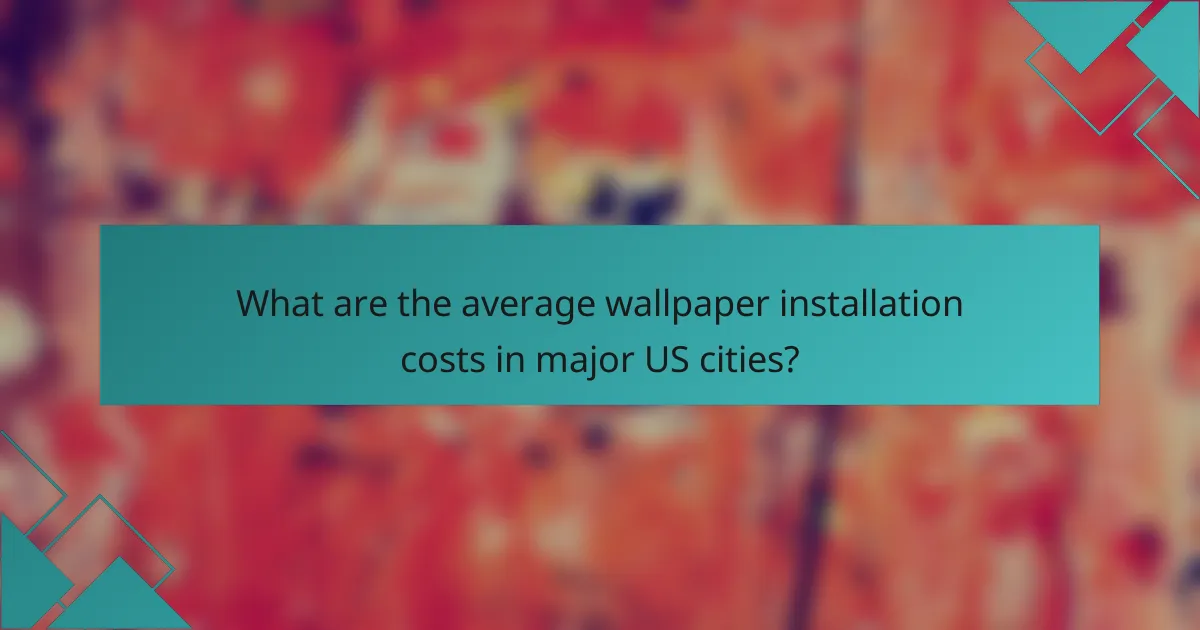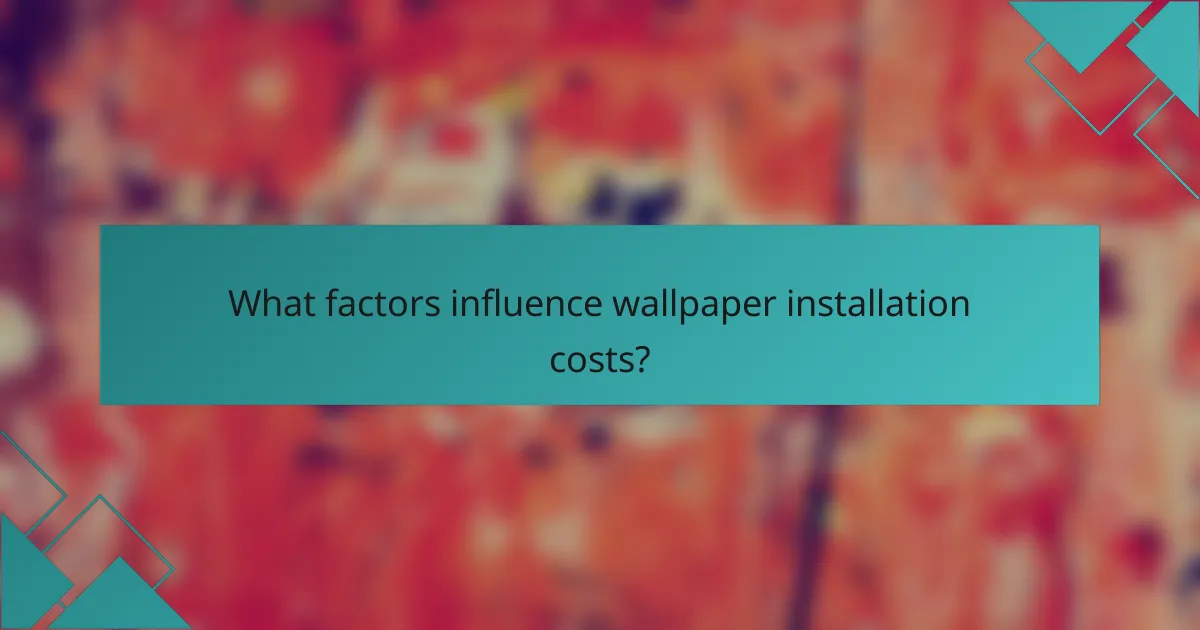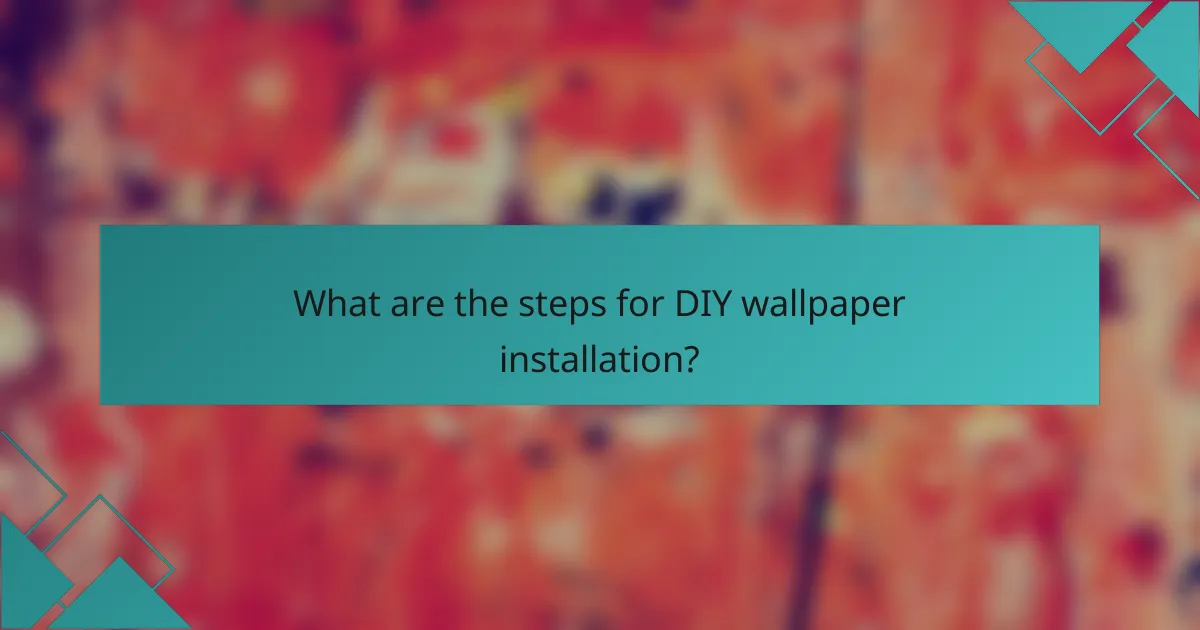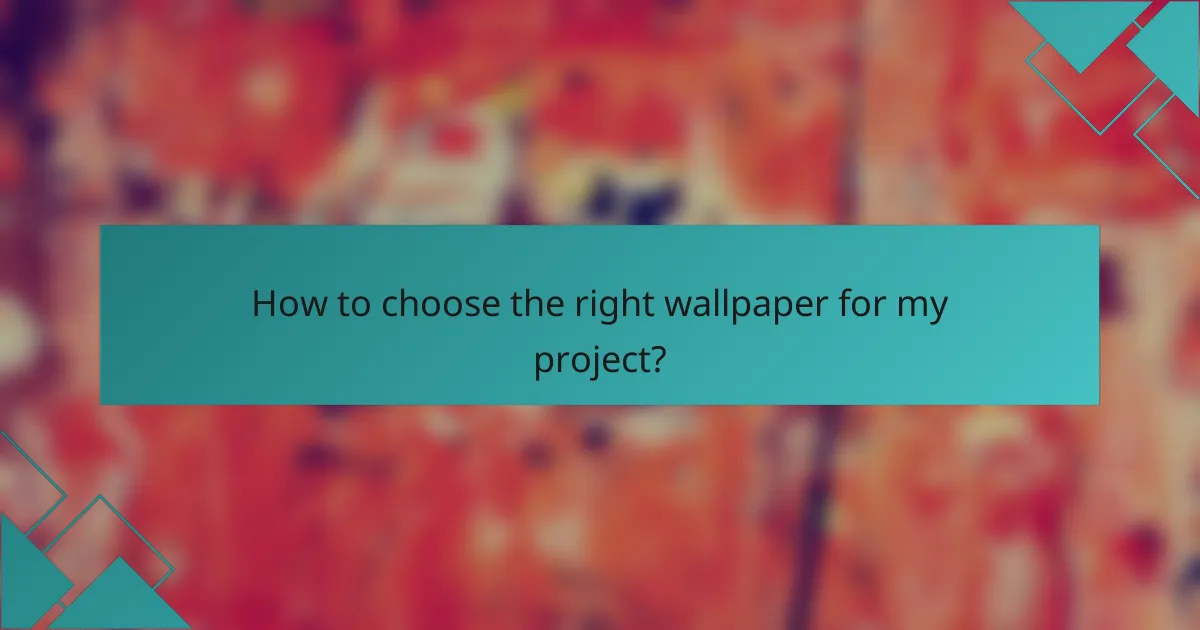When considering wallpaper installation, understanding the associated costs is crucial for effective budgeting. Prices can range from $1 to $7 per square foot for professional services, influenced by location and wallpaper type. Whether you opt for professional help or a DIY approach will depend on your budget, skill level, and the complexity of the project.

What are the average wallpaper installation costs in major US cities?
The average cost of wallpaper installation varies significantly across major US cities, influenced by factors such as labor rates, material costs, and the complexity of the job. Generally, homeowners can expect to pay between $1 and $7 per square foot for professional installation, depending on the location and type of wallpaper chosen.
Cost in New York City
In New York City, wallpaper installation costs typically range from $3 to $8 per square foot. The high demand for skilled labor and the cost of living contribute to these elevated prices. Homeowners should also consider additional expenses for materials, which can vary widely based on the wallpaper design.
For a standard room of about 300 square feet, the total cost could range from $900 to $2,400, including both labor and materials. It is advisable to obtain multiple quotes from professionals to find the best deal.
Cost in Los Angeles
Los Angeles offers a slightly lower range for wallpaper installation, generally between $2 and $6 per square foot. The city’s competitive market allows for more options, but quality can vary, so it’s essential to choose experienced installers.
For a typical 300-square-foot room, homeowners might spend between $600 and $1,800. When budgeting, remember to factor in the cost of wallpaper, which can add significantly to the overall expense.
Cost in Chicago
In Chicago, the average cost for wallpaper installation falls between $2.50 and $5.50 per square foot. The city’s diverse selection of wallpaper options and skilled labor can help homeowners find a balance between quality and cost.
A 300-square-foot room could cost between $750 and $1,650 for installation. It is wise to check for any local regulations or permits that might affect the installation process.
Cost in Houston
Houston’s wallpaper installation costs are generally more affordable, ranging from $1.50 to $4 per square foot. The lower cost of living and ample labor supply contribute to these rates, making it an attractive option for homeowners.
For a standard room of 300 square feet, the total installation cost might be between $450 and $1,200. Always consider the quality of materials, as cheaper options may lead to higher long-term costs.
Cost in Miami
In Miami, homeowners can expect to pay around $2 to $5 per square foot for wallpaper installation. The vibrant design scene in the city offers a variety of wallpaper styles, which can influence pricing.
For a typical 300-square-foot room, costs could range from $600 to $1,500. It’s beneficial to shop around and compare different installers to ensure a fair price and quality workmanship.

What factors influence wallpaper installation costs?
Wallpaper installation costs can vary significantly based on several key factors. Understanding these elements can help you budget effectively whether you choose to hire professionals or tackle the project yourself.
Type of wallpaper
The type of wallpaper you select plays a crucial role in determining installation costs. Specialty wallpapers, such as vinyl or fabric, tend to be more expensive than standard paper options. Additionally, textured or patterned wallpapers may require more skill to install, potentially increasing labor costs.
For example, basic paper wallpaper might cost around $0.50 to $2 per square foot, while high-end vinyl can range from $2 to $7 per square foot or more. Always factor in the cost of materials when budgeting for your project.
Room size
The size of the room significantly impacts the overall installation cost. Larger spaces require more wallpaper and more time for installation, which can increase both material and labor expenses. Conversely, smaller rooms may be more economical to cover.
As a general guideline, expect to pay more per square foot for smaller rooms due to the fixed costs associated with setup and preparation. For instance, a small bathroom might cost less overall but could have a higher per-square-foot rate compared to a large living room.
Labor costs
Labor costs can vary widely depending on the region and the experience level of the installer. In urban areas, professional rates may be higher, ranging from $25 to $75 per hour, while rural areas might see lower rates. Always request quotes from multiple professionals to find a competitive price.
When opting for DIY, consider the time investment required. If you lack experience, the project may take longer than anticipated, potentially offsetting any savings from not hiring a professional.
Preparation work
Preparation work is essential for a successful wallpaper installation and can influence costs significantly. This may include removing old wallpaper, repairing walls, or applying primer. Each of these tasks requires time and materials, which can add to the total cost.
For example, wall preparation might add an additional $1 to $3 per square foot to your project. If you’re considering DIY, ensure you allocate enough time and resources for these preparatory steps to avoid complications during installation.

Should I hire a professional or do it myself?
Deciding whether to hire a professional for wallpaper installation or to tackle it yourself depends on your budget, skill level, and the complexity of the project. While hiring experts can ensure a flawless finish, DIY can save money if you have the time and patience to learn the process.
Benefits of hiring professionals
Hiring professionals for wallpaper installation offers several advantages, including expertise and efficiency. Experienced installers can handle complex patterns and large spaces with precision, reducing the risk of mistakes that could lead to costly rework.
Additionally, professionals often have access to high-quality materials and tools that may not be readily available to the average homeowner. This can result in a more durable and aesthetically pleasing finish.
Advantages of DIY
DIY wallpaper installation can be a rewarding experience and allows for significant cost savings. By doing the work yourself, you can avoid labor costs, which typically range from $30 to $80 per hour, depending on your location.
Moreover, taking on the project yourself gives you complete control over the design and execution. You can work at your own pace and make adjustments as needed, ensuring the final result aligns with your vision.
Common challenges in DIY
While DIY wallpaper installation can be economical, it comes with its own set of challenges. One common issue is misalignment of patterns, which can lead to an unprofessional appearance. Ensuring proper measurements and planning is crucial to avoid this pitfall.
Additionally, the preparation process, including wall cleaning and priming, can be time-consuming and is often overlooked by beginners. Skipping these steps can result in poor adhesion and premature peeling, undermining the overall quality of your work.

What are the steps for DIY wallpaper installation?
DIY wallpaper installation involves several key steps that ensure a smooth and professional-looking finish. By following a structured approach, you can effectively apply wallpaper yourself, saving on labor costs while achieving a beautiful result.
Preparation steps
Preparation is crucial for successful wallpaper installation. Start by measuring the walls to determine how much wallpaper you need, allowing for extra in case of mistakes. Clear the walls of any old wallpaper, dirt, or grease, and repair any imperfections with spackle or filler.
Next, gather your tools, which typically include a wallpaper brush, smoothing tool, utility knife, and a measuring tape. It’s also wise to have a level and a straightedge for precise cuts. Ensure the room is well-ventilated and the temperature is suitable for adhesive application.
Application process
The application process begins with cutting the wallpaper to the appropriate lengths, usually matching the height of your walls. Apply adhesive to the back of the wallpaper or directly to the wall, depending on the type of wallpaper you are using.
Align the first strip with a plumb line to ensure it is straight. Use a smoothing tool to eliminate air bubbles as you press the wallpaper onto the wall. Continue this process for each strip, making sure to match patterns where applicable. Take your time to ensure each piece is applied evenly and securely.
Finishing touches
Once all the wallpaper is applied, trim any excess at the edges using a utility knife for a clean finish. Pay special attention to corners and edges, ensuring they are neatly aligned. If necessary, apply a wallpaper seam adhesive to secure any overlapping edges.
Finally, clean any excess adhesive from the surface with a damp cloth and allow the wallpaper to set according to the manufacturer’s instructions. This will help ensure durability and a polished appearance in your newly decorated space.

What tools are needed for wallpaper installation?
Wallpaper installation requires a variety of tools to ensure a smooth and professional finish. The right tools can significantly impact the quality of the job, whether you are hiring professionals or tackling a DIY project.
Essential tools for professionals
Professional wallpaper installers typically use high-quality tools designed for efficiency and precision. Key tools include a wallpaper pasting machine, a utility knife for trimming, a seam roller to ensure tight seams, and a level to maintain straight lines.
Additionally, professionals often have access to specialized tools like wallpaper smoothing brushes and measuring tapes. These tools help achieve a flawless application and reduce the risk of bubbles or misalignment.
Tools for DIY projects
For DIY wallpaper installation, the essential tools are more accessible and can often be found at local hardware stores. Basic items include a utility knife, a measuring tape, a paint roller or brush for applying paste, and a smoothing tool to eliminate air bubbles.
While you may not need professional-grade equipment, having a few additional items can help. A straightedge for cutting and a sponge for cleaning excess paste are useful additions. Remember to take your time and follow instructions carefully to avoid common pitfalls like misalignment or tearing the wallpaper.

How to choose the right wallpaper for my project?
Choosing the right wallpaper involves considering factors such as style, durability, and application method. Assess your space’s lighting, size, and existing decor to find a wallpaper that complements your project.
Consider the room’s purpose and style
The purpose of the room significantly influences your wallpaper choice. For example, a bedroom may benefit from calming colors and patterns, while a living room can handle bolder designs. Ensure the wallpaper aligns with the overall aesthetic you want to achieve.
Evaluate material options
Wallpaper materials vary widely, including vinyl, paper, and fabric. Vinyl is durable and easy to clean, making it ideal for high-traffic areas, while paper offers a more traditional look but may require more maintenance. Consider the longevity and upkeep of each material before making a decision.
Think about application and removal
Some wallpapers are easier to apply and remove than others. Peel-and-stick options are user-friendly for DIY projects, while traditional paste wallpapers may require professional installation. If you plan to change your decor frequently, opt for removable wallpaper to simplify the process.
